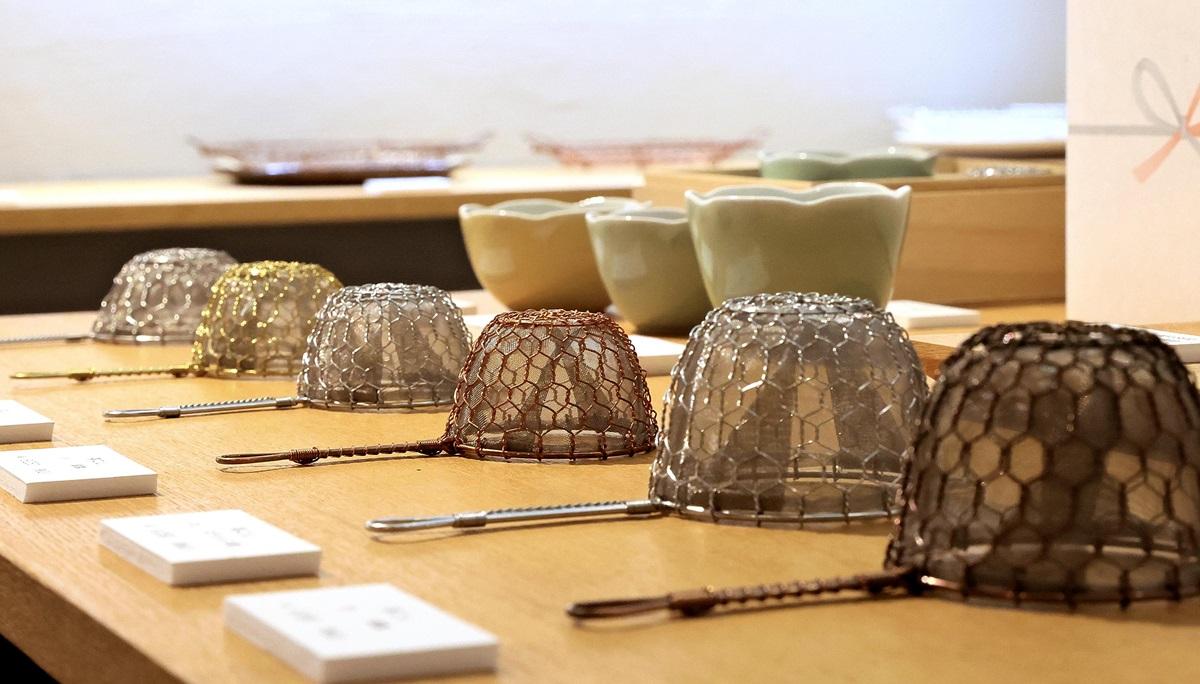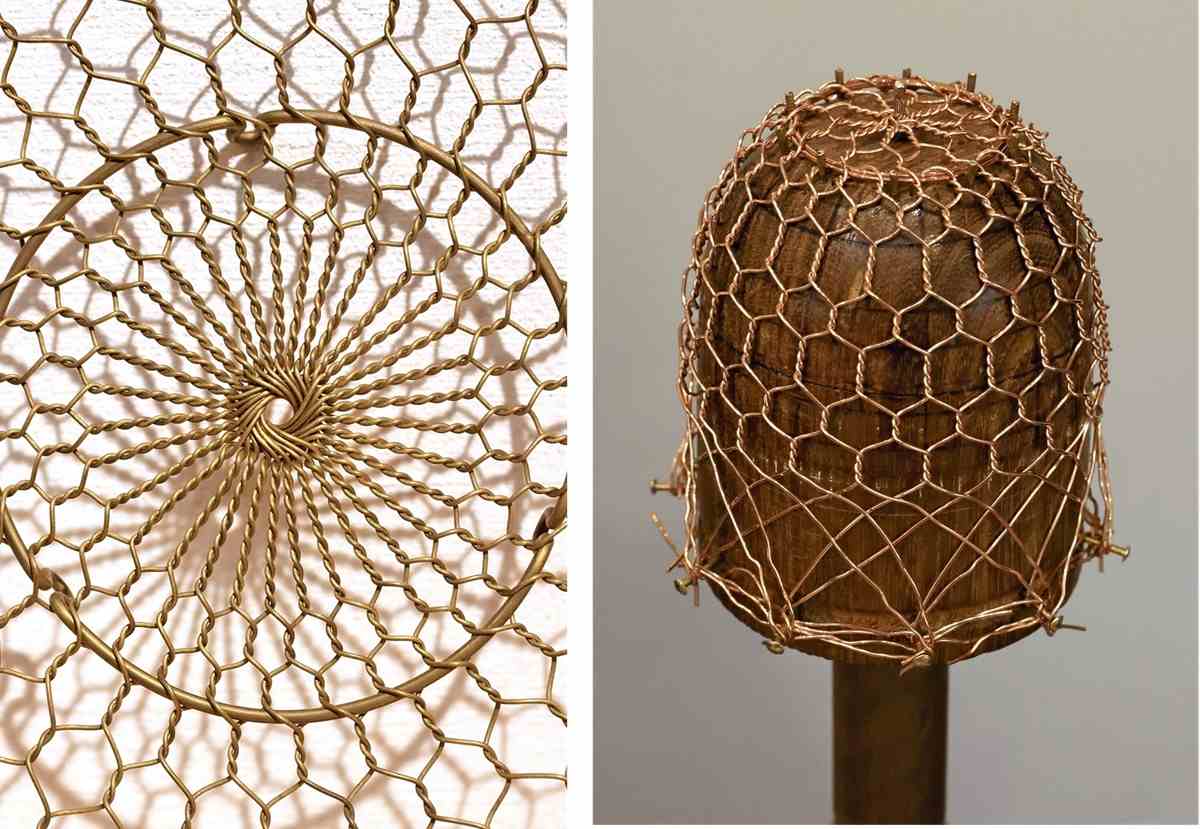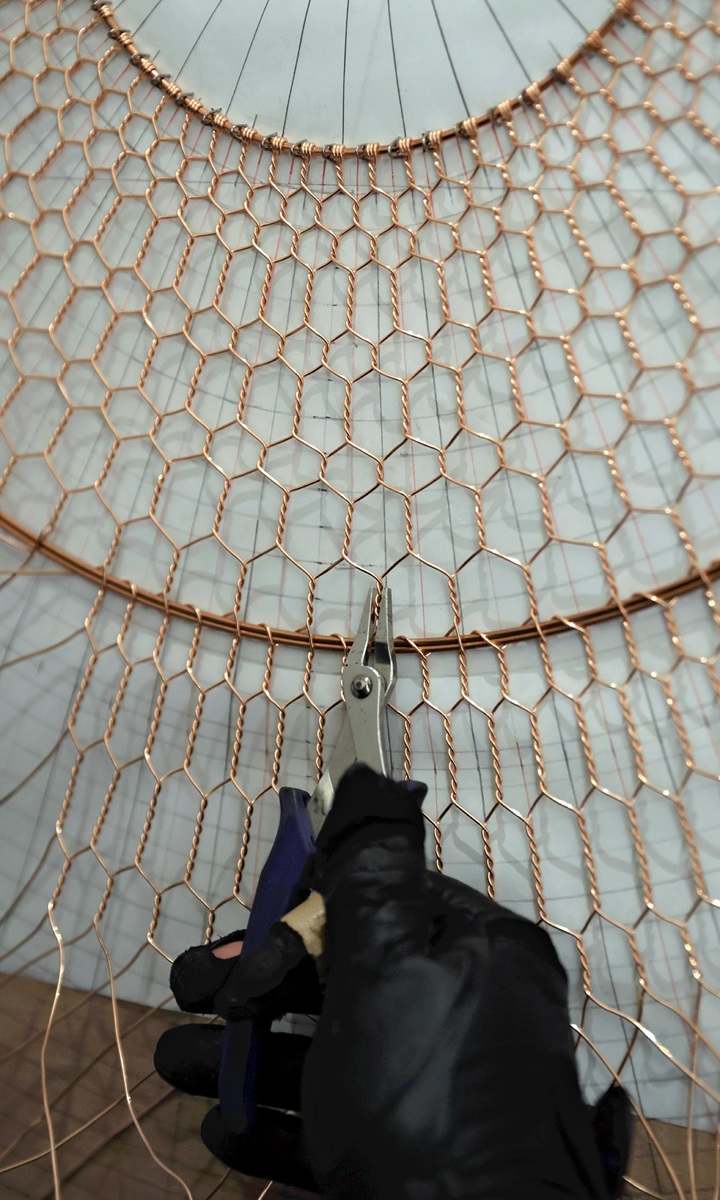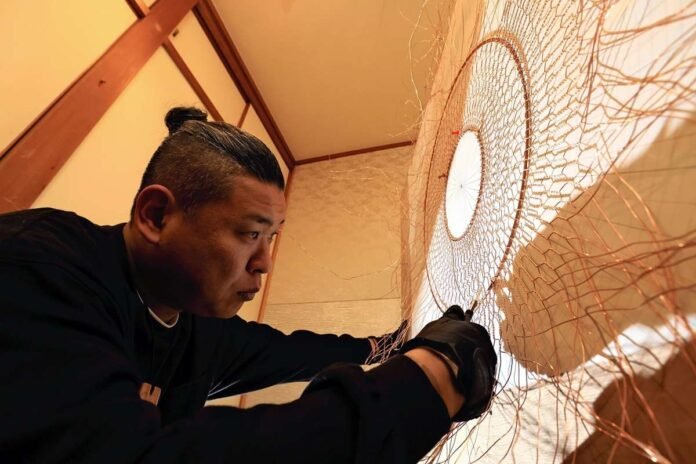Toru Tsuji hand weaves a piece for a sauna skylight in Higashiyama Ward, Kyoto.

11:40 JST, April 20, 2024
KYOTO — As he twists two copper wires together, then two more, and another two, a woven pattern of shiny metal hexagons is created.
Craftsman Toru Tsuji produces kitchenware and other items by twisting copper or stainless steel wire in this way in his workshop in Higashiyama Ward, Kyoto. His craft is called Kyo-kanaami.

Tea strainers come in different colors depending on the material they are made of, such as copper or stainless steel.
“I hold my breath when I concentrate on it,” says Tsuji, the second-generation owner of Kanaami-Tsuji, a manufacturer of Kyo-kanaami. He spends no less than ten hours a day on his extensive pieces.
It is said that the art of Kyo-kanaami dates back 1,000 years. Tsuji, who has been in the family business for 21 years, makes a variety of Kyo-kanaami products, ranging from traditional Japanese items such as tea strainers, tofu scoops and sesame burners to Western goods including lampshades and coffee drippers.
The traditional handicrafts, woven in mesh patterns of chrysanthemums or tortoiseshell, are made with the utmost care and attention to detail. Of course they are beautiful, but they are also a pleasure to use.

Kanaami-Tsuji lampshades are used in luxury hotels.
An unpleasant company
Kanaami-Tsuji was founded in 1985 by Tsuji’s father, Kenichi, in Kita Ward, Kyoto. According to Tsuji, his parents were so obsessed with their work that they never visited his school on classroom observation days. “Partly because it made me feel lonely, I didn’t want to take over such a consuming company,” he says.
Tsuji shunned the family trade and worked in a hip-hop clothing store after graduating from high school. His courteous approach to customers helped boost sales, but he left the job after about three years. He also traveled through Jamaica, the birthplace of reggae.
When Tsuji visited his parents’ workshop for the first time in several years after the trip, he was attracted by their honest approach to craftsmanship.
“I thought it would be more interesting to make products and sell them myself,” Tsuji said. He joined Kanaami-Tsuji at the age of 21.
The workshop then mainly made utensils for cooking and Japanese confectionery stores, and most products were sold to wholesalers. But one time, when Tsuji was delivering the products, he saw them being treated roughly. He realized that he had to sell directly to customers, as these were crafts that he and the other workers at the workshop had dabbled in.

Left: A tea cup saucer made with different weaving techniques. Right: A wooden jig used to weave wire mesh
After convincing his parents to let him open a store in 2007, he opted for products that were easy for the average person to use at home.
For example, when people prepare nabe hotpot dishes at the dining table, they often place the meat-rinsed vegetables and other ingredients waiting to be cooked on a flat wire mesh strainer on top of a plate. Tsuji made such a sieve with refined square and octagonal patterns. To prevent the sieve from scratching the plate, he coated the legs with silicone.
The dish, designed to be both traditional and user-friendly, proved popular and Tsuji gained confidence in the piece.
Orders from abroad
To broaden his horizons, Tsuji travels to the United States, Europe and other Asian countries. He believes that artisans should always take new perspectives and renew their own. This mentality led him to go beyond traditional kitchen products and create lampshades.
The lampshades are designed in such a way that when the light is turned on, a patterned shadow is projected onto the wall. These charming pieces, which change from a reddish-brown hue to amber over time, have also attracted orders from abroad.

The mesh is adjusted in a detailed work.
“A person’s age, gender and career history are of no importance when you work with your hands,” says Tsuji. “I want to create a sector that is diverse.”
His workshop has grown to seven craftsmen, some of whom had withdrawn from society or been hired mid-career. He also sells muddlers made in a facility for people with disabilities.
“I wasn’t good at my studies, but with my current job I can satisfy customers, and sometimes they praise me,” he says. “Traditional crafts can create jobs, and these jobs support the local community.”
Tsuji delves into the traditions of the craft and expands the possibilities of Kyo-kanaami.
“There are many dynamic people in Kyoto. I want to show this to people all over the world through my skills.”
***
If you are interested in the original Japanese version of this story, Click here.



